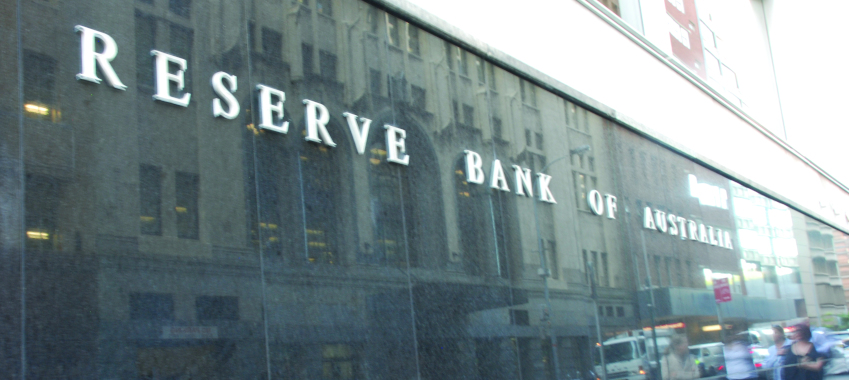
The majority of mortgage holders are expected to weather looming rate rises, but the Reserve Bank has issued warnings around rising inflation and sinking house prices.
The Reserve Bank of Australia (RBA) expects borrowers will be able to cop rising interest rates over the next few years after building cash buffers through the pandemic, as outlined in its latest quarterly Financial Stability Review.
However, the central bank has warned that if household income doesn’t increase alongside inflation, there will be risks to borrowers’ capacity to make their mortgage repayments.
Borrowers and lenders have also been told to watch for swings in house price growth as rate rises loom, particularly for mortgages with a high loan-to-valuation ratio.
Using a model based on historical relationships between interest rates and supply and demand factors, the central bank has estimated that a 200-basis point rise in interest rates would lower house prices by around 15 per cent over a two-year period.
The RBA also completed a scenario analysis using information from its securitisation data set to examine the impacts on households if variable mortgage rates picked up by 200 bps.
Around 60 per cent of all mortgage borrowers have variable-rate loans, with around two-thirds of these being owner-occupiers.
According to the central bank, around 40 per cent of variable-rate borrowers had already made average monthly payments over the past year that would be large enough to cover such a rise in repayments.
A further 20 per cent would face an increase in their repayments that would max out at 20 per cent.
Around a quarter of variable-rate owner-occupiers would see their repayments rise by more than 30 per cent, but around half of these borrowers would have accumulated excess cash buffers equivalent to one year’s worth of their current minimum repayments.
The share of borrowers estimated to face a debt servicing ratio greater than 30 per cent (a common threshold to determine if the repayment burden is high) would double from around 10 per cent to 20 per cent.
Borrowers with fixed-rate loans are also expected to weather the rise in debt repayments when their fixed-rate terms expire. Close to 40 per cent of outstanding housing credit had fixed rates in late 2021, roughly double that at the start of 2020.
Over 90 per cent of fixed-rate loans that are due to expire in the next two years will face an increase in repayments – for over half of these borrowers, the increase is estimated to be in the range of zero to 20 per cent.
Around one-third of fixed-rate borrowers have terms that will expire beyond 2023, but they could face larger shocks depending on how rates evolve over the next two years.
The RBA has also forecast that investors with interest-only loans will face the largest adjustment in repayments, reflecting the additional change to principal and interest repayments when their fixed-rate periods expire.
“Although the estimated increases in repayments are sizeable for some borrowers, it should be manageable for most,” the Financial Stability Review said.
However, the RBA’s calculations have assumed household income after other expenses would remain unchanged.
“If rising inflation was to erode real household incomes, some borrowers may have to draw down their accumulated excess payment buffers much more quickly and/or cut back on other spending,” the central bank warned.
Building buffers
Looking at mortgage offset and redraw accounts, the flow of payments in excess of scheduled repayments was equal to around 2.5 per cent of household disposable income in the December quarter, compared with around 1 per cent in the two years preceding the pandemic.
“Securitisation data suggests that the median excess payment buffer for owner-occupiers with a variable-rate loan was equivalent to around 21 months’ worth of scheduled payments in February 2022, up from around 10 months’ worth at the start of the pandemic,” the RBA review explained.
“However, for those with lower initial payment balances, the increase has been much smaller. The increase in payment buffers partly reflects the impact of lower interest rates on minimum repayments.
“If interest rates were to increase by 200 basis points, current excess payments would be equivalent to just under 19 months of scheduled payments.”
High DTI lending has climbed further
APRA and the RBA raised the alarm on the rise of risky home lending during the June quarter last year, when new borrowers taking on debt greater than six times their annual income comprised 21.9 per cent of the banks’ total new lending.
Since then, recent APRA data showed new loans with a high debt-to-income (DTI) ratio have crept up to almost a quarter of new home loans in the December quarter, at 24.4 per cent.
APRA intervened late last year, introducing a higher loan serviceability buffer rate that came into force from November. Banks were forced to consider borrowers’ ability to meet an interest rate 3 percentage points above the product rate – compared to the previous 2.5 percentage points.
But the financial regulators have recently indicated they may have to implement further controls, in response to the continued rise in high DTI lending.
APRA recently completed a consultation with lenders on its plans to require them to be ready to implement limits on high-DTI, high-LVR, investor or interest-only lending.
The Reserve Bank expects the raised buffer rate will have limited the supply of credit to borrowers who would be most susceptible to finding difficulty in making repayments.
However, the buffer rate change was expected to slim households’ maximum borrowing capacity by around 5 per cent, with the RBA noting the impact on credit growth was “expected to be modest given the majority of borrowers do not take out loans near their maximum”.
Further, the review stated some borrowers may have responded by declaring more complex sources of income previously not required to support their desired loan amount, by making other adjustments to their finances, such as closing unused credit card facilities.
Looking ahead, upcoming increases to the Household Expenditure Measure living expenses benchmarks, which will account for price rises, could further reduce maximum loans sizes for borrowers.
“It is important that lending standards do not slip and that borrowing and lending decisions are resilient to higher interest rates and the potential for falls in housing prices and/or real incomes,” the Financial Stability Review said.
The RBA also noted that the proportion of borrowers with a loan six or times their income and a buffer of less than one-month minimum repayments has declined since the beginning of the pandemic, to just below 1 per cent.
The share of owner-occupier variable-rate borrowers with low and declining buffers has decreased to around 2 per cent over the same period.
[Related: BankVic trials mortgage broker distribution]
